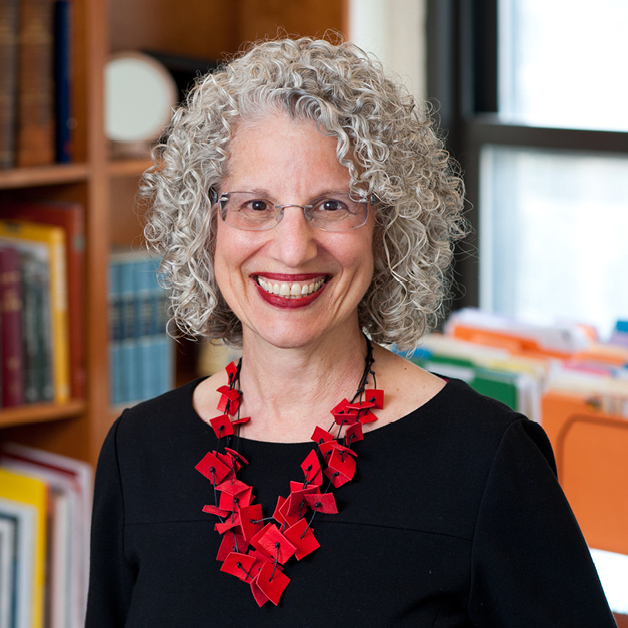Evergreen Lessons from the Haggadah

The Passover seder—the most celebrated Jewish ritual—serves as a symbolic reenactment of the journey of the Israelites from slavery to freedom. The Haggadah commands us to experience it annually as a way of developing historical empathy for all who are oppressed, enslaved, displaced, and hoping for liberation; we have ritualized the recounting of our people’s enslavement and deliverance in part to cultivate a sense of moral responsibility toward those suffering in our own day.
The seder is meant to spark discussion of these issues, and thousands of Haggadot reflect the varied ways that communities have interpreted this directive over time, space, and interests. The Haggadot in my childhood home included several additional, mimeographed pages to remember those who perished in the Holocaust and express solidarity with a new generation of Soviet Jews yearning for liberation. Throughout my adulthood, new additions found their way into our seder. Our understanding of freedom and liberation, so essential to the Pesah seder, was enriched and enlarged not only by using various Haggadot and topical inserts, but also by learning from seder guests who experienced the sweetness and joy of freedom viscerally—a formerly incarcerated person, a family who had escaped the shah of Iran, a victim of childhood abuse, and a colleague whose scholarship focused on the enslavement of African Americans in our own country. In each generation, we discover new ways to understand and personalize our ancient teachings.
As we approach Passover this year, our focus includes Ukrainians fighting valiantly to defend themselves against Russian invasion. Outraged by the violence, heartbroken by the loss of life, and appalled by the destruction, we feel an obligation to help the Ukrainian people by offering monetary support and help with resettlement. And we are especially attuned to helping the tens of thousands of Jews among them.
Exactly one hundred years ago, in April 1922, my great-grandparents emigrated to the United States with their four children, fearing for their lives in Kremenets, a city located in what is now present-day western Ukraine. My great-grandfather, Aaron Shimon Shpall, an educator and journalist, recorded his thoughts about leaving “the city that we were born in and that we spent years of our lives in,” acknowledging how hard it would be “to separate from our native land, and our birthplace and our father’s house.” But he was clear that the homeland he knew – which was part of Russia – had “embittered our lives and saddened our souls. If not for the three million of our brothers who live there, it could be overturned along with Sodom and Gomorrah and the world would have lost nothing.”
My family succeeded in leaving because in the aftermath of World War I, the western part of Russia—including Kremenets—became part of the newly created modern Poland. Shpall’s brother and sisters, who had left previously and settled in Denver, Colorado, sent him the necessary travel expenses and affidavits, and Shpall and his family received Polish passports on June 21, 1921. Even after this date, it took months for them to leave. The situation worsened, and Shpall was arrested. He was eventually released, but when a local officer tipped him off to an impending second arrest—from which he would likely never return—the family resolved to leave. By this time the visa needed to be ratified again by the American Consul in Poland. In requesting ratification, Shpall provided the requisite reassurances: “I am going to Colorado, a province not populated very much, and my settlement there will have no bad influence upon the material life of the inhabitants,” given his level of education and his experience as an educator.
The anguish of my family’s departure and, I can only imagine the feelings of refugees all over the world in every era, is captured in Shpall’s diary: “Nobody desired to go, but everybody had to go. We all run, or, to speak more correctly, we flee. And when somebody flees, there is no question: ‘Where to?’ Where your feet carry you! Where you have the possibility!”
After being reunited with his family in Colorado, Shpall and his family ultimately settled in New Orleans, where he served as teacher and then as assistant principal of the communal Hebrew school.
American Jewry has flourished thanks to ancestors like Shpall. Owing to their courage and determination, we are privileged to recount the Exodus from Egypt each year as citizens of a democratic state and to develop the empathy needed at moments like this to help others who fear for their lives.
For some, historical empathy for the plight of the Ukrainian people might be tinged with ambivalence, because of ancestors—like Shpall—who suffered from brutal antisemitism at the hands of Ukrainian neighbors or whose ancestors’ murder at the hand of the Nazis was abetted by local Ukrainians. How can we square these complicated emotions? In part, because we also know that countless other Ukrainians fought in the Russian army to defeat the Nazis; and, Ukraine has changed greatly over time. The Babyn Yar Holocaust Memorial Center, on the site of the largest massacre of Ukrainian Jews by the Nazis, is in the planning stages, and today, Ukraine is led by a Jewish president.
Most important, we quell our doubts because the Haggadah reminds us not to take our freedom for granted, pointing us instead to activate our sense of moral responsibility to help others who are fighting to secure their own. Our Haggadah prods us to recall our history so that it will conjure up our best selves, so that we will do what we can to ensure that the future brings freedom, safety, and security to all. It’s a sentiment I believe my great-grandfather would have shared.
The publication and distribution of the JTS Commentary are made possible by a generous grant from Rita Dee (z”l) and Harold Hassenfeld (z”l).



